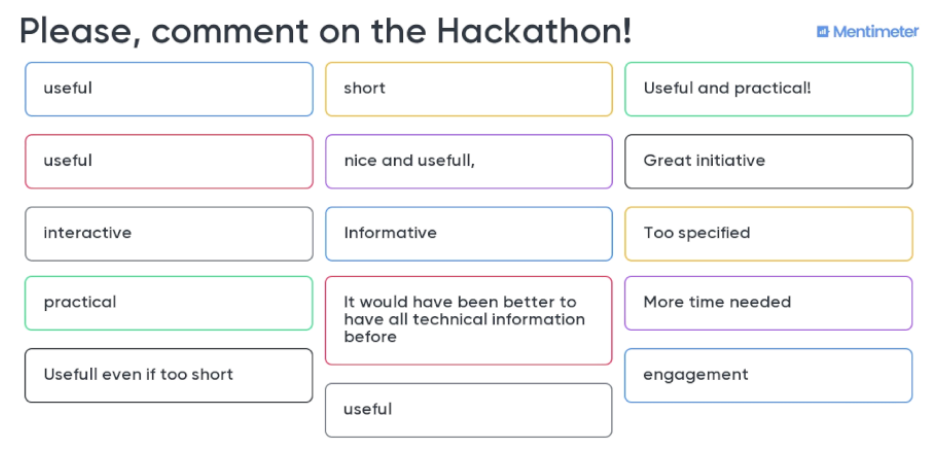The paper On the Use of Hackathons to Enhance Collaboration in Large Collaborative Projects – A Preliminary Case Study of the MegaM@Rt2 EU Project by A. Sadovykh, D. Truscan, P. Pierini, G. Widforss, A. Ashraf, H. Bruneliere, P. Smrz, A. Bagnato, W. Afzal and A. Espinosa, presented at Design, Automation and Test in Europe (DATE) Conference explores the use of hackathons to foster collaboration among partners in large consortiums.
One of the main issues arose during the MegaMart2 first plenary meeting, held in Rome, was the limited concrete and effective technical results in terms of cooperation between partners and experiments as well as the lack of progress related to the application of the available tools to the use cases. Note that in the case of MegaM@Rt2, we have 27 beneficiaries, distributed among academia (7 universities and 3 research centers), Small and Medium Enterprises (8 SMEs) and Large Enterprises (9 LEs) from 6 countries (Finland, Sweden, Czech Republic, Italy, Spain and France), slightly below the average ECSEL project. Anyhow, we have well over 120 participants/members directly involved in the project.
Collectively we can identify several common issues with traditional approaches for project regular plenary meetings. We received many complaints that the plenary meetings are very administrative. Usually, a plenary is divided in slots for presentation by various partners (e.g. Work Package leaders) about the current state of the project and future plans. Many times, the discussions are kept at a minimum. Many participants feel disengaged and consider plenary meetings as a waste of time. As consequence, many partners apply cost savings and send managers only without involving the technical staff, while, in fact the technical persons is actually producing the deliverables and would stronger benefit from tighter links with colleagues in other organizations working on the same deliverables. Thus, the output of plenary meetings becomes questionable.
Therefore, we decided to re-think the plenary organization focusing the multiple objectives of the meeting: the administrative ones, to address the housekeeping issues related to the project status and its evolution, but the technical ones as well to trace the guidelines and focus the objectives of the new developments. To comply with this last point, we have directed towards a revision of the hackathon concept in order to effectively apply it to our needs. In particular, we approached the following plenaries with a more balanced distribution of managerial and technical staff across meeting days, devoting a hackathon-like day as a strategy to foster collaboration between case study owners and tool/method providers on challenging technical issues. We considered that the plenary meetings are the recommended venue for such events since at least one member of each project organization is typically present and available for face-to-face meetings. The latter are considered by different practitioners more efficient compared to virtual meetings.
The novelty of our approach is that we organize an internal technical workshop as a challenge contest. Case study partners submit in advance their challenges related to the project goals. These challenges should be concise to be experimented within 4 hours. The teams are then formed around those challenges. On the hackathon day, partners have 4 working hours to come with a result that should be both interesting and convincing.
So far the experience has been repeated in all recent plenary meetings with a great level of success. As you can see in the featured image of this post, the hackathon was the preferred answer to the question of what was the best thing in the plenary?. Participants also provided a good number of suggestions on how to improve hackathons for future editions:

The long-term effects are still under observation and need to be quantified in a more formal way, but some significant benefits are already tangible and concrete. So far, we have observed the following immediate effects:
- General improvement of the project working atmosphere; Continuation of the hackathon work on new research lines, and new applications of project tools to use cases; Easier development progress status tracking of use cases and tools, comprehension of practical demonstration;
- Significant improvement on partner interactions either among use cases and tools providers and between tool providers, that also identified new opportunities to integrate with each other’s tools (sometime complementary) or new features to improve their offers.
ICREA Research Professor at Internet Interdisciplinary Institute (UOC). Leader of the SOM Research Lab focusing on the broad area of systems and software engineering. Visit jordicabot.com

